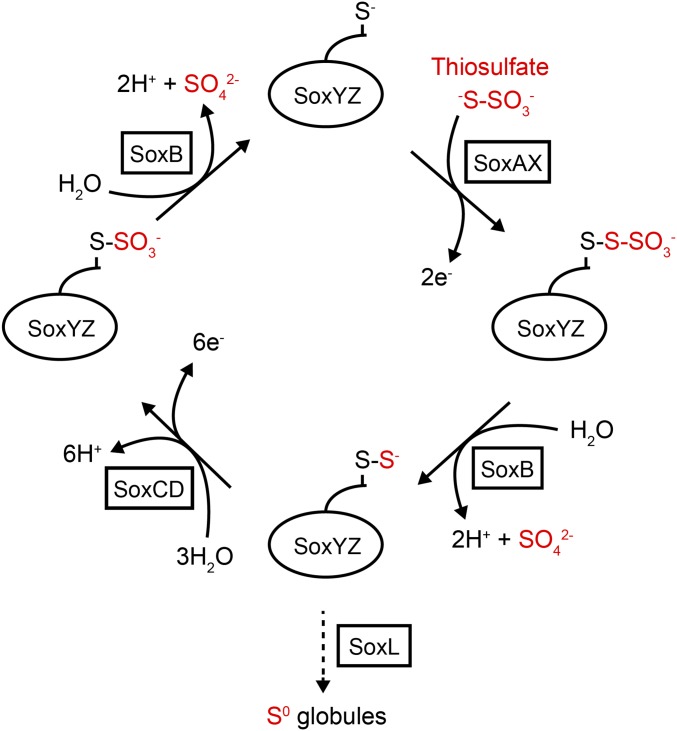Fig. 1.
Model for the oxidation of thiosulfate by the Sox system. Pathway intermediates are carried by the SoxYZ complex through conjugation to a cysteine residue on the SoxY swinging arm (shown as –S−). A small c-type cytochrome acts as the direct electron acceptor from the Sox enzymes. In some sulfur-oxidizing bacteria, the Sox pathway is cyclical and thiosulfate is completely oxidized to sulfate (solid arrows). Other sulfur-oxidizing bacteria lack the SoxCD enzyme, and the sulfane intermediate is used to produce polymeric sulfur species in the form of sulfur globules, which are subsequently oxidized to sulfate by a cytoplasmic pathway (dotted arrow) (10). Sulfane transfer between SoxYZ and the sulfur globules is likely mediated by the rhodanese-like protein SoxL (11). As well as partnering the canonical Sox enzymes, SoxYZ probably also interacts with SoxEF/FccAB (12), a flavocytochrome c with a poorly defined function in the Sox mechanism (13). Additionally, SoxYZ has been implicated in sulfite oxidation in A. vinosum where it is suggested sulfite is carried as a SoxY-cysteine-S-sulfinate derivative, which then interacts with unidentified partners (14).

